Are you looking to improve your child’s fine motor skills? Look no further; we have all the fine motor activities you need to develop your child’s confidence, self-care, and independence. Increasing fine motor control enhances their play and prepares them for future success.
To build those small motor skills, we have put together 25 engaging and effective fine motor activities for preschoolers and toddlers.
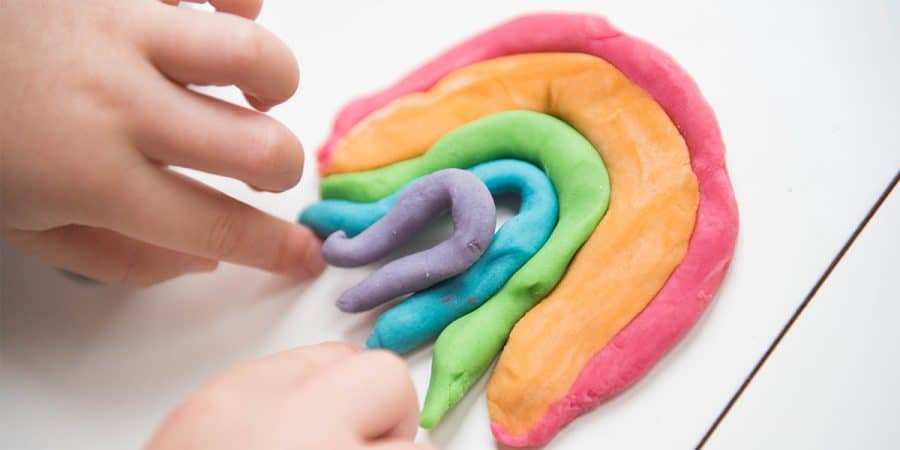
Examples Of Fine Motor Skills For Preschoolers & Toddlers
Accomplishing essential everyday tasks like feeding themselves and getting dressed requires fine muscle control. For example, your child’s hands must be strong enough to open a door, button a coat, zip up their pants, or hold a glass of milk.
Other small motor skills for preschoolers may include:
- Cutting with scissors.
- Holding and using a pencil.
- Color, scribble, or draw with markers, crayons, or chalk.
- Playdough manipulation.
- Snapping together blocks.
- Stacking blocks, small cups, buttons, and wooden spools.
- Building with small blocks
- Puppet play.
- Putting together simple puzzles.
- Playing board games.
- Opening and closing things (latches, lids, boxes).
- Eating with silverware.
- Holding and drinking from a glass.
- Brushing their teeth.
Fine Motor Activities For Toddlers & Preschoolers
Note: Several of these materials and activities are not for children who still put things in their mouths. Some of the activities use small items that can be considered a choking hazard. Close adult supervision is always recommended. Please know your child and use the materials and activities at your own discretion.
Getting your preschoolers and toddlers involved in fine motor activities is simple with fun, fine motor materials. You might consider creating a fine motor skills “kit” so you will be prepared for fine motor development activities at any time.
Here is a list of materials for various fine motor activities that can be found around the house, recycled, or purchased inexpensively.
- Beads
- Buttons
- Candles
- Cardboard
- Chalk
- Clothespins
- Cotton balls
- Crayons
- Fabric pieces
- Feathers
- Foam pieces
- Glue
- Golf tees
- Hole punch
- Marbles
- Markers
- Nuts & bolts
- Paint
- Watercolors
- Tempera
- Finger-paint
- Painters tape
- Paper
- Paperclips
- Pasta shapes & tubes (dried)
- Paste
- Pipe cleaners
- Plastic ornaments
- Playdough
- Pom poms
- Pools noodles
- Q-Tips
- Ribbon
- Rubberbands
- Safety Scissors
- Spoons
- Stickers
- Straws
- Styrofoam blocks
- Things from nature
- Pebbles
- Leaves
- Pinecones
- Sticks
- Bark
- Shells
- Tongs
- Toothpicks
- Tweezers
- Water supplies
- Basters
- Spray bottles
- Squeeze bottles
- Eyedroppers
- Funnels
- Pouring containers
- Spoons
- Whisks
- Sponges
- Yarn
When assembling motor coordination activities, think:
- Balancing
- Beading
- Buttoning
- Clipping
- Cutting
- Lacing
- Painting
- Pinching
- Poking
- Sewing
- Sorting
- Spooning
- Squeezing
- Stacking
- Weaving
Playdough Activities For Fine Motor Skills
Playdough is, hands down (pun intended), one of the most versatile fine motor materials. You can build, chop, cut, rake, score, shred, flatten, and roll it. It builds hand strength when they squash, squeeze, twist, poke, push, and pull. It includes a tactile experience while developing hand-eye coordination.
Your child can practice two-handed tasks (coordinating two hands together) by rolling playdough into a long rope. Also, they can stick straws, poke beads, and push pasta into it. How about squeezing playdough through a garlic press or citrus juicer?
To further strengthen their small muscles for better fine motor control, why not make your own playdough? Mixing and kneading it requires a lot of hand strength.
There are many tools you can add to expand the playdough fun. Just look around the house!
I have gathered up some ideas in addition to above the fine motor materials for inspiration.
- Citrus juicer
- Cookie cutters
- Craft sticks
- Egg cartons
- Garlic press
- Gemstones
- Glass pebbles
- Googly eyes
- Muffin tins
- Pizza cutters
- Plastic silverware (knives, forks & spoons)
- Rolling pins
- Small boxes
- Small cups
- Stamps
- Toy creatures
- Toy vehicles
- Wooden letters and numbers
Block Play Activities & Fine Motor Development
The benefits of block play are many, one being fine motor development. Block activities like stacking blocks require fine motor control and hand-eye coordination. Your child uses and strengthens their wrists, hands, fingers, and thumb while balancing the blocks.

Blocks are well-loved and come in various materials, sizes, shapes, and colors for all ages. For example, magnetic play and magnetic building blocks are perfect for introducing your toddler to fine motor development. Wooden toy blocks are ideal for building fine motor coordination. Once your child has some success with their fine motor control, you can add snap-together blocks like blocks for toddlers.
Let’s look at some fine motor activities for toddlers and preschoolers using blocks.
 Block Transfer
Block Transfer
Have your child transfer the blocks from one area to a container using tongs, spoon, spatula, or fingers (practicing the pincer grasp).
After picking up the blocks, they move them from the floor to an egg carton, muffin tin, cookie sheet, or bowl. You can vary the tools and containers based on your child’s skill level, increasing the difficulty as their fine motor control progresses.
Some sample combinations to try:
- Move the blocks to a cookie sheet with a spatula.
- Pick up blocks with the pincer grasp and put them in the egg carton.
- Scoop blocks into the bowl with a spoon.
- Transfer blocks to a muffin tin with tongs.
 Big Building Blocks & Clothespins
Big Building Blocks & Clothespins
Grab a set of building blocks for toddlers and some clothespins. If you have colored ones that match the block colors, that is even better. Now flip the blocks upside down and have your toddler clip the clothespins onto the blocks’ edge. If you want to incorporate color matching, have them attach the pins to the matching blocks. Otherwise, just grasping, pinching, and placing the pins strengthens the pincer grip and small motor development.
Fine Motor Painting Activities
Nothing says express yourself better than some finger-paints and a large sheet of paper! Whether painting with their fingers, paintbrush, sponges, pipettes, cotton balls, or Q-Tips, they are building fine motor coordination.

 Finger-Painting
Finger-Painting
What toddler doesn’t love finger painting? All that messy gooey material squishing between their fingers. What could be better than that? Here you will want to encourage your child to get in there and really use their fingers to build finger strength. Try using different materials each time. For example, besides paint, try shaving cream, pudding, jello, or any other messy non-toxic medium.
 Painting With Small Sponges
Painting With Small Sponges
This activity focuses on the pincer grasp while encouraging creativity. You will cut up some sponges into tiny pieces: the smaller the sponges, the more difficult the activity. Cut them to fit the level of your child. You want them to practice their skills but not get frustrated and give up! Then just let them paint away.
 Q-Tip Painting
Q-Tip Painting
This painting activity is based on a specific style of art known as “pointillism.” Toddlers and younger preschoolers will simply paint with a Q-Tip or cotton swab instead of a paintbrush. However, older preschoolers can use a cotton swab to paint dots forming shapes and objects. Either option requires fine motor coordination to grasp the cotton swab and control the art’s small movements.
 Squeeze Painting
Squeeze Painting
Fill up some small squeeze bottles or pipettes with watered-down paint. Thin it according to the way you will use it. For example, watercolors squeezed from the pipettes and dropped on paper towels or coffee filters make a beautiful watercolor paper that they could use in another project.
However, squeezing paint from a bottle onto pine cones requires a thicker consistency. It can be dripped or squeezed out in a steady stream. Either way, they will be using their fine motor skills. By the way, your child can glue pom-poms and beads to painted pine cones to create a “Christmas Tree” for the holidays. Check out all these other Christmas Activities for a festive holiday season!
Fine Motor Skills Activities With Clothespins
Clothespins are another excellent material for building finger strength the kids will love! Spring-loaded clothespins also hone in on pincer grasp strength. Have your kids practice by hanging their artwork or other items on a clothesline.
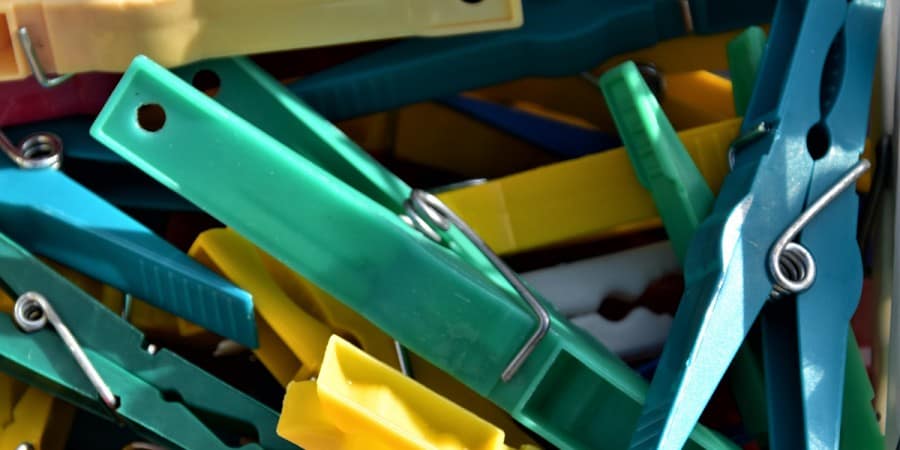
 Clothespin Clip
Clothespin Clip
In this activity, your child will clip clothespins to sponges or cardboard pieces. Cut up some clean kitchen sponges or colored cardboard into smaller pieces. You can cut them all into squares or different shapes—for example, squares, circles, rectangles, triangles, diamonds, and more. Then have your child clip the clothespin to the edge of the sponge or cardboard.
Fine Motor Activities With Pipe Cleaners
Pipe cleaners are great for fine motor development. These seemly simple items can be bent, pushed, poked, and threaded.
 Pipe Cleaners, Colanders & Boxes, Oh My!
Pipe Cleaners, Colanders & Boxes, Oh My!
A motor activity that is simple with lots of variations. Here the skill is pushing and poking the pipe cleaner into or through various holes.
Empty Box
Punch holes in the lid and let your child insert the pipe cleaners into the box’s holes. You could also use straws, dried spaghetti, wooden dowels, or toothpicks.
Colander
Give your child a strainer and a stack of pipe cleaners, then watch them explore. They can push the pipe cleaners through the holes from the outside in or the inside out. They may bend them so both ends go through a hole to make a loop.
 Pipe Cleaner Sculptures
Pipe Cleaner Sculptures
Pipe cleaners are soft and easily shaped. Keep an eye on the ends, which may be sharp! You can bend the tips over before giving them to your child to sculpt. Preschoolers can create shapes, letters, or numbers.
For extra bling, have them thread on some beads before shaping the pipe cleaner.
Hand Strengthening Activities For Kids
Tongs and tweezers are perfect for working on fine motor control. They build up hand strength and prepare children for scissors skills. Also, transferring small items with tongs or tweezers requires a lot of hand-eye coordination. While easier to squeeze, tweezers require more hand-eye coordination to successfully move one object to another place. On the other hand, Tongs are larger but require a lot of control and hand strength to maneuver.

 Sorting Activities With Small Items
Sorting Activities With Small Items
For this activity, you can try sorting a variety of small items. Choose one at a time. You will also need a tool to move the elements and a collection container. Mix and match, selecting one tool, one small item, and a collection container.
Suggested transfer tools: Tongs, tweezers, spoons, or fingers
Recommended collection containers: Egg cartons, empty water bottles, muffin tins, paint palettes, ice cube trays, small jars, cups, or bowls
Suggested small items to sort: Pom poms, beads, buttons, marbles, cereal (i.e., Cheerios or Froot Loops), candy (i.e., Skittles), crayons, candles, toothpicks, small blocks, cotton balls are all fantastic for working on fine motor movements that grasp, pick up and move them.
Use your imagination; the combinations are endless. However, we gave you a few ideas to get started:
- Transfer pom-poms to an egg carton with tweezers.
- Move pom-poms to a muffin tin with tongs.
- Spoon marbles into small jars.
- Sort beads with their fingers into a paint palette.
- Transfer cereal to an ice cube tray with loop-ended tweezers.
- Spoon buttons into small cups.
Kitchen tongs also make a great clean up tool for blocks!
Fine Motor Activities Using Office Supplies
Who knew that household office supplies could be so helpful with fine motor development? See some of the creative ways to use them to build your preschooler’s fine motor skills.
 Paper clip Chain
Paper clip Chain
Here is an activity that is super easy to set up. Grab a bowl of paper clips (colored ones are preferable) and let the kids clip them together into a chain necklace or other shapes. Paper clips are ideal for pincer grasp activities, hand-eye coordination, and building finger strength. Plus, the kids will love wearing the finished creation. Additionally, your child can clip paper clips to colored index cards.
 Paper Hole Punch
Paper Hole Punch
Another simple activity that requires enormous amounts of hand and finger strength. Kids will love it, but punching holes with a hole punch will be challenging for your child. In addition to punching paper, they can punch holes in old greeting cards and then use the cards to practice lacing. Let them practice often but plan to help them.
 Paper Tearing
Paper Tearing
Simple paper activities like folding or tearing paper build fine motor skills.
 Rubber Band Fine Motor Activities
Rubber Band Fine Motor Activities
Elastics or rubber bands are finger-strength building materials perfect for fine motor activities. They develop strength when stretching them around objects. There is a multitude of ways to use them for all skill levels. Why not try a few of these?
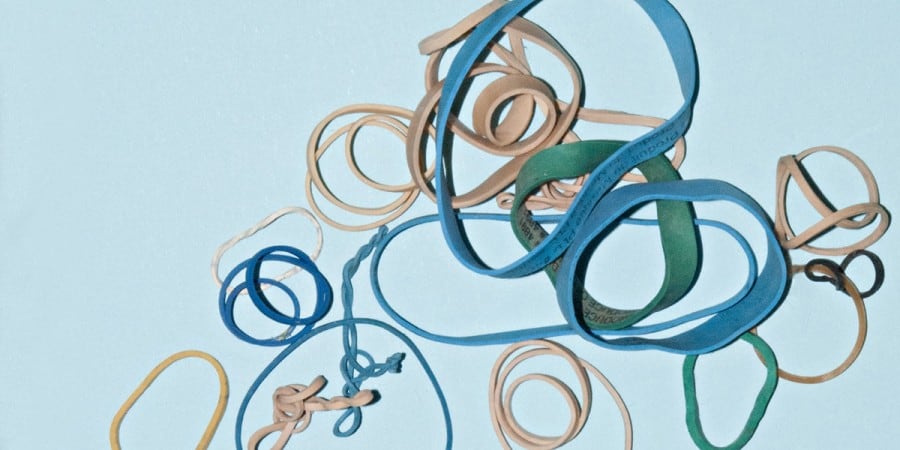
- Larger rubber bands around cans or cut-up pool noodles.
- Stretch a variety of rubber bands around pine cones or sticks.
- Large bands can wrap around upside-down muffin tins as makeshift geoboards.
- Small colorful elastics work well around craft sticks.
 Stickers Collage
Stickers Collage
Stickers are the best. Preschoolers and toddlers love them! You can use stickers to create a collage or a scene. Peeling the stickers off the sticker sheet is an excellent fine motor activity but tricky. It requires fine motor control to peel them off and then place them on the paper.
 Tape Peeling
Tape Peeling
Here you will need a roll of painter’s, washi, masking, or another colorful tape safe for your surface. You will want to be sure to test it in a hidden spot before using tape.
This motor activity can be done outside on a picnic table or on a large smooth surface. Windows, whiteboards, chalkboards, or floors work well.
If safe, you can try the dining room table to keep the youngsters busy while getting dinner ready.
Basically, you lay down strips of tape in various lengths going in different directions. Now let the kids go at it, peeling up the tape. They will be using their pincer grasp to grab the edges and building hand strength too! They can create pictures, peel them off, and stick them back on.
Fine Motor Activities For Preschoolers – Hand Sewing
Sewing for older preschoolers is a wonderful way to engage them in fine motor development skills. Not only are these activities beneficial for developing fine motor skills in preschoolers, but they can be helpful in the future. Start small and simple with just a few activities and build from there.
- They can sew large buttons to the canvas with yarn.
- Try drawing shapes on the canvas for them to sew along.
You may even want to create a little sewing basket of their own. Here are a few recommended supplies to get started.
Preschooler Sewing Basket
- Colorful buttons
- Felt shapes with small holes snipped out of the center
- Large plastic needle with a blunt tip
- Plastic canvas or stiff mesh with large spaces cut into multiple sizes and widths. Finish the edges with duct tape
- Ribbon pieces in various lengths
- Safety scissors
- Strips of fabric or netting- perfect to practice tying knots
- Yarn wrapped around cardboard tubes or wooden pegs
Besides learning to hand sew, your child can practice yarn wrapping or weaving.
 Weaving For Preschoolers
Weaving For Preschoolers
Weaving activities can be completed using paper, yarn, ribbons, or fabric strips. Weave them through and around pine cones, baskets, railings, or a toddler’s gate. Try making a loom from craft sticks. You could even go outside and weave through the fence.
Preschool Cutting Activities That Pair Perfectly With Sewing
Scissor skills do not come easy to preschoolers. They need a lot of practice to get it right, and the best way to do this is to CUT, CUT, and CUT SOME MORE!
 Scissor Skills Activity
Scissor Skills Activity
They can cut up paper, magazines, or junk mail and make a collage. If this seems too difficult, have them cut up straws, which take a quick snip. Then come back to the paper once they have mastered the quick snip.
Threading Activities Fine Motor Skills
Threading packs a powerful punch when it comes to fine motor development. When pushing and pulling, your child strengthens their hand and finger muscles. Picking up small objects builds the pincer grasp. Be creative and let the kids get threading! With an unlimited combination of materials, the possibilities are endless.
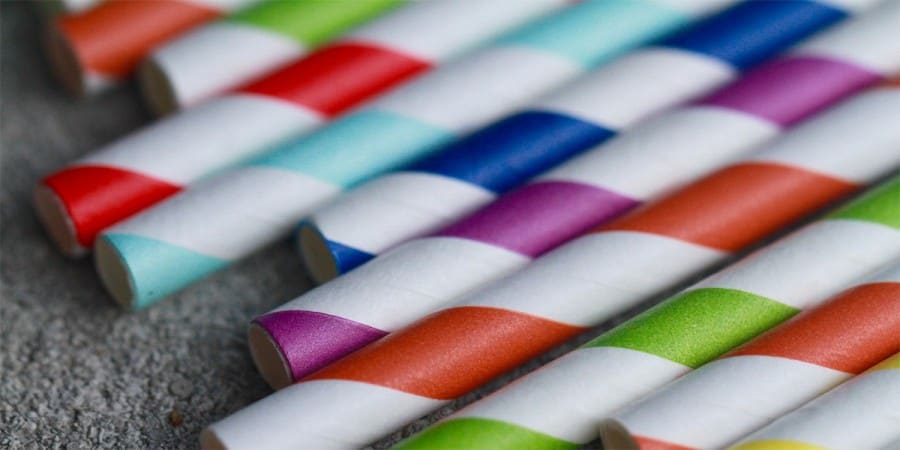
 Threading activities
Threading activities
Here is a fine motor activities list to develop fine motor coordination:
- Big beads on tipped yarn (finish the edge with duct tape, or use purchased tipped yarn pieces).
- Cereal circles (think Cheerios or Froot Loops) on tipped yarn.
- Pasta tubes (dried) on tipped yarn.
- Straw pieces (like beads) on tipped yarn.
- Buttons on pipe cleaners.
- Keys on pipe cleaners.
- Pasta tubes (dried) on pipe cleaners.
- Pony beads on pipe cleaners.
- Pasta tubes (dried) on a ribbon.
- Pony beads on colored feathers.
- Q-Tips through straws.
- Straw pieces (like beads) on shoelaces to make a necklace.
Fine Motor Strengthening Activities With Water
Ah, water! Such a soothing, versatile, and fine motor building material. Set up a water play area in the kitchen, backyard, or bathtub!
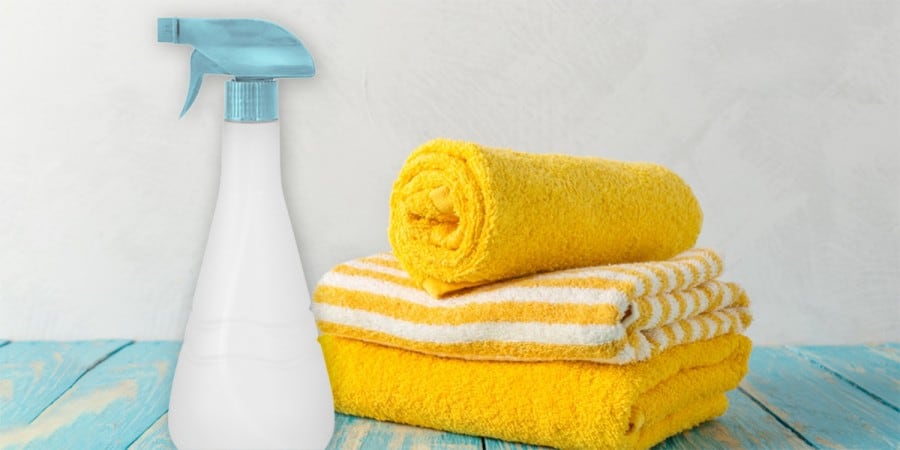
List of fine motor activities tools to include in your water play:
- Cups
- Eye droppers
- Funnels
- Pipettes
- Pouring containers
- Sponges
- Spoons
- Syringes
- Turkey basters
- Whisks
Consider adding a little gentle soap or liquid watercolors for an added twist.
 Water Play Activities
Water Play Activities
Check out these water play activities you will likely see your child using to build those fine motor skills.
- Squeezing water from the sponges builds hand strength.
- Pouring and filling cups by squirting water from the basters.
- Transferring water with eye droppers, pipettes, or syringes to ice cube trays, works the small muscles in their hands. They isolate the fingers used for writing while practicing the pincer grasp to suck up and release the water. It requires patience and control to not let the water out too fast.
 Washing Windows
Washing Windows
This activity can build both gross and fine motor coordination. Give your child a spray bottle and a clean towel to wipe the windows, and let them get washing. Using the spray bottle will strengthen their hand muscles, and drying with the cloth uses their gross motor skills.
 Frozen Treasure Hunt
Frozen Treasure Hunt
Using a spray bottle, baster, squeeze bottle, dropper, syringe, or anything else you can use to fill with warm water will work. You will want a large plastic container to hold everything.
First, you will create your frozen tower by filling an empty milk carton with treasures and water. You also may want to consider freezing it in layers to spread out all the “jewels.” Think of small plastic toys, gems, beads, or small toy vehicles. Whatever you think will inspire your child.
Next, once the tower is frozen, remove it and place it in the container (to catch all the water). This is where the fun starts, have the kids start spraying and squirting the tower with warm water until they can uncover all the “treasures.”
Another option instead of a tower is to freeze individual items in an ice cube tray—continue the process as above, setting the “treasures” free.
Fine Motor Skills Activities With Pool Noodles
While not explicitly connected to the above water play, we definitely think of them in conjunction with water.
 Pool Noodle Activities
Pool Noodle Activities
Pool noodles can be used for various tasks, like making obstacle courses. However, we are going to cut them up for some fine motor activities. You will cut them into 1″ and 2″ lengths.
- Place cut side up and balance large pom poms on top.
- Cut up the noodles and add them to your block center.
- With the holes facing up, sort and transfer small pom poms to fill the centers.
- Thread 1″ pieces on ribbon, yarn, or string.
Fine Motor Skills Activities For Toddlers & Preschoolers
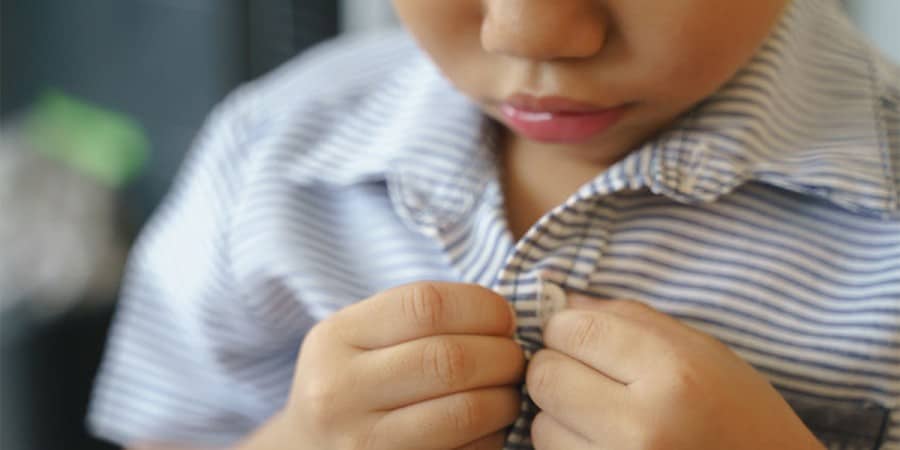
 Fine Motor Skill Development & Daily Activities
Fine Motor Skill Development & Daily Activities
Helping is the name of the game for toddlers and preschoolers. We put together a fine motor activity list that your child can do to “help” and build their fine motor coordination.
- Put away their blocks and toys.
- Use silverware to eat.
- Pour their own milk into a cup.
- Set the table.
- Clear their dishes.
- Wipe the table with a sponge.
- Mix, stir, or shake to help with meal prep.
- Dress themselves using buttons, zippers, and snaps.
- Put on their shoes with velcro tabs.
 Pincer Grasp Development & Scarves
Pincer Grasp Development & Scarves
To help your youngest toddlers learn to pick up small things, fill an empty, clean, wipes container with scarves or large fabric scraps. Then let your child grab and pull them out of the box.
 Sing Songs With Hand Motions
Sing Songs With Hand Motions
Your child’s small hand muscles need repetitive, fine motor movements to improve coordination and dexterity. Finger songs are a perfect match for targeting fine motor movements like finger isolation, finger stretching, pincer grasp, forearm rotation, and many more.
A song like “Itsy Bitsy Spider” helps your child learn to work their hands together, one after the other
Try some of these other songs with finger and hand motions:
- Baby Shark
- Slippery Fish
- Where is Thumbkin?
- Wheels On The Bus
How To Improve Fine Motor Skills
Fine motor skills are the coordinated small muscle movements in the hands, fingers, thumb, and wrists. These small movements include:
- Pincer grasp (using just the thumb and one finger to pick something up).
- Hand-eye coordination (coordinating small movements in conjunction with their eyes).
- Hand and finger strength (to manipulate and grip objects).
- Two-handed tasks (coordinating the use of both hands together).
Fine motor coordination requires a good foundation of gross motor development for success. The large muscles help the small muscles.
How are your child’s gross motor skills? Do they need practice? Explore these gross motor activities for preschoolers and toddlers.
To support fine motor development, we must encourage our children to explore, play, and interact with various materials. Things like:
- Playdough
- Blocks for kids (including snap-together blocks and magnetic blocks),
- Puzzles (teaches them how to manipulate objects by flipping, turning, and placing them).
- Craft supplies to spark their imagination and creativity.
Look for moments during the day for your child to practice small movements with their hands and fingers. For example, pushing together, pulling apart things, and stringing beads.
Want to see what your toddler and preschooler will be up to over the next few years? Check out the list of fine motor development milestones they will be achieving.
Whether you thread, sort, or clip clothespins to big building blocks, you want to get your kids using their fine motor skills. Simple things like painting, squeezing playdough, stacking blocks, or water play all increase your child’s fine motor development.
Which fine motor activities will you try next?
Fine Motor Activities For Preschoolers and Toddlers FAQs
What are fine motor skills?
Fine motor skills are when the brain and small muscles in your child’s hands, fingers, and wrists work together to carry out a planned motion. For example, picking up a block between the finger and thumb.
Why are fine motor skills important?
Fine motor coordination is vital to your child’s self-care, independence, and everyday tasks.
How can I improve my child’s fine motor skills?
You can build your child’s fine motor skills by encouraging them to engage in activities that require small, intricate movements. Activities like threading beads, finger painting, and stacking blocks.
How do fine motor activities benefit my child?
Fine motor activities help children develop hand-eye coordination, precision, and independence. By using activities to practice, kids can build their strength and dexterity in a fun way.
What are examples of fine motor activities for preschoolers?
Activities that require small, intricate movements with their fingers and hands, like cutting, manipulating play dough, and putting together puzzles.
What’s the best age for fine motor activities?
Our list is created for ages 2-5 year-olds to develop their fine motor skills. However, all ages can enjoy and benefit from the activities.
